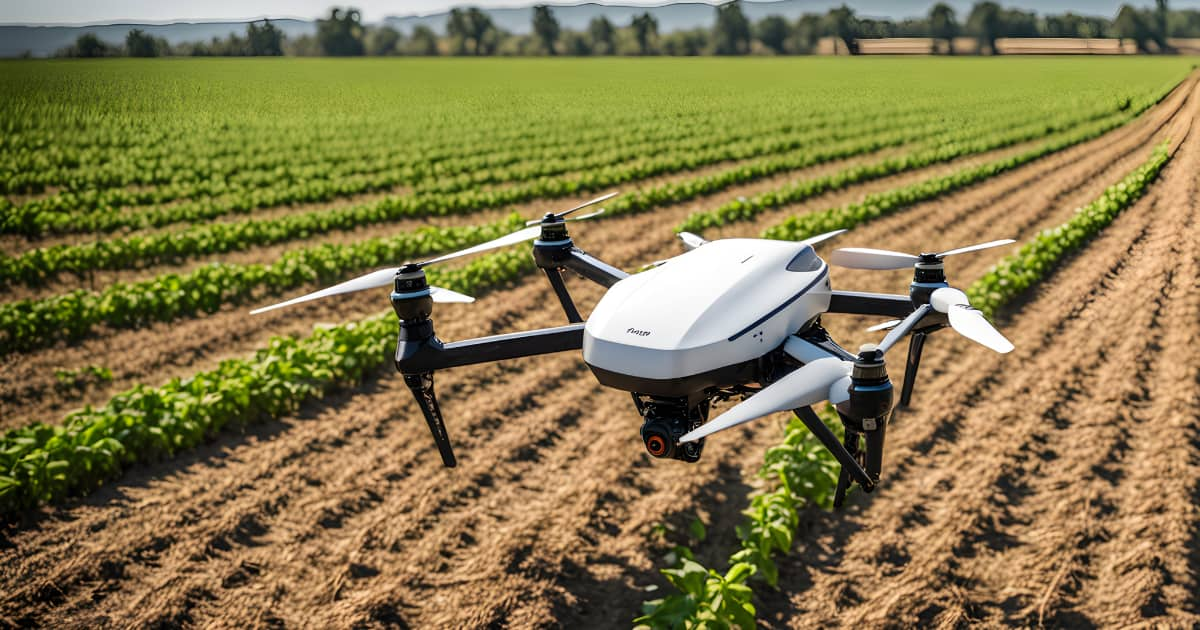Once confined within the enclosure of massive supercomputers and data centers, artificial intelligence (AI) has taken off, especially due to the emergence of Edge Computing. Nowadays, AI is ubiquitous. It can be found in our smartphones, in autonomous vehicles, and at the heart of the very concept of a smart home.
This technological revolution opens up unprecedented possibilities. However, it also raises fears. Taming embedded AI, mastering it end-to-end to make it an ally and exploit its fabulous potential, are the challenges we are currently facing.
To better understand the stakes, we propose in this article to discover the new world of embedded AI: what is it and how has the technology evolved? Where is it currently used and what impact does it have on our lives? We will delve into this technology that is radically redefining our economic and social future, while examining the challenges it still needs to address in terms of performance, privacy, security, and ethics.
Evolution of embedded AI: key factors
For AI to become embedded, it was necessary to develop sophisticated algorithms and high-performance graphics processors at a low cost. Another key factor: the ability to manage large and detailed databases, which embedded AI needs for its learning. The development of the technology relied on low-energy-consuming computer hardware, various sensor systems, and optimized algorithms1.
Smartphones are one of the most striking examples of this evolution. Low-energy-consuming sensors were initially used to free up bandwidth. Then smartphones were able to recognize different expressions, like “Hey Siri” or “ok Google”, with the development of voice assistants. In other words, smartphones have shown that it is possible to deploy machine learning algorithms for sensors on very low-energy-consuming computing platforms such as microcontrollers and DSPs.
Miniaturization, low-energy-consuming systems, and high-performance sensors are in some ways the backbone of the development of embedded AI. But the central role of Edge Computing should also be mentioned.
Rise of artificial intelligence: the importance of edge computing
Edge Computing has greatly contributed to the rise of artificial intelligence. Rather than centralizing data processing in large data centers, Edge Computing aims to move data processing to the “edge” of the network, i.e., towards local devices. This approach reduces latency, saves bandwidth, and improves privacy, which is particularly important for AI applications that require real-time decision-making and on-site data analysis2.
During the 1990s and 2000s, edge computing was able to develop thanks to major advances in the miniaturization of electronic components and an increase in computing power, which allowed sophisticated AI algorithms to be integrated into small devices.
Embedded AI, internet of things and machine learning: prospects
The advent of the Internet of Things (IoT) has promoted device connectivity, multiplying the exchange of data flows, and providing a favorable ecosystem for embedded AI. The rise of Machine Learning and Deep Learning has made it possible to develop AI algorithms capable of “learning” and “adapting” automatically. These are essential capabilities for embedded systems3.
Today, with embedded AI, devices can process and interpret data locally, make real-time decisions, and interact with the world in a more intelligent and automated way. From smartphones to autonomous cars, embedded AI is fundamentally transforming a wide range of devices and applications, while changing the way we use them.
But the story of embedded AI is just beginning. With the development of technology and an increase in computing power, we can expect to see embedded AI become more sophisticated and ubiquitous in the coming years. Among the most impressive current developments is the new ultra-thin skin patch from Monarch University. This patch is equipped with nanosensors and embedded AI. It can monitor 11 signals related to human health4.
Specificities of embedded AI
As we’ve seen, embedded AI operates at the “edge” of the network. It processes data at the source, that is, on the device itself, rather than sending it to a remote server. This radical transformation is shaking up industrial practices. Decision-making is fast and adapted, which contributes to increased productivity and efficiency, for example, in industrial processes.
The current success of embedded AI can be explained by several factors. If it is imposing itself today in sectors as diverse as automotive, consumer electronics, industry, or health, it is because embedded AI addresses many current issues.
But above all, embedded AI meets new needs. Its rise is based on the growing demand for automated and responsive devices, as well as increased concerns about data privacy. Add to this our desire to save resources. All these factors converge to propel embedded AI to the forefront.
Difference between embedded AI and integrated AI
These two terms are often confused. While some use these expressions interchangeably, embedded AI and integrated AI can have different meanings depending on the context.
Embedded AI (embedded AI or EAI)
Embedded AI refers to the integration of artificial intelligence capabilities into physical devices or automated systems. It involves the inclusion of specific hardware and software components to perform AI tasks directly on the device, without the need for a connection to external resources. For instance, autonomous cars are equipped with embedded AI to make real-time decisions, voice recognition devices use embedded AI to process commands locally, etc.
Integrated AI (integrated AI)
Integrated AI refers to the integration of AI algorithms or features into applications, software, or systems. Integrated AI can operate locally, but it can also be connected to external resources. Unlike an embedded AI, a system with integrated AI can make calls for additional calculations external to the device. In mathematical terms, embedded AI is strictly included in integrated AI. For example, many mobile apps use integrated AI to provide personalized recommendations. There are also photo filters relying on integrated AI. This is the case, for example, with Adobe’s integrated AI, Firefly5.
In short, embedded AI integrates artificial intelligence into autonomous physical devices, while integrated AI focuses on integrating AI algorithms into software or systems, whether they are used locally or by connecting to external resources.
Focus on edge computing
Edge computing6 somewhat makes the transition between embedded AI and integrated AI. Indeed, it is a computer architecture where data is processed at the edge of the network, as close as possible to the original source. Thus, it is a way through which AI can perform data processing without transferring information over long distances.
Edge computing meets current challenges in terms of managing large databases. It allows us to move beyond the traditional computing concept, which relies on an ever-growing data center, and to overcome bandwidth limitations, latency issues, and unpredictable network disruptions that can pose problems, faced with the exponential growth of data to be processed. The peripheral architecture of Edge computing meets this challenge in that it moves some storage and computing resources outside the data center to bring them closer to the data source and limit exchanges.
Edge computing is what allows us to go beyond integrated AI and bring about embedded AI.
Main applications of embedded AI
Embedded AI is now omnipresent. It influences a wide variety of industrial processes but also has a major impact on many aspects of our daily lives. Here are a few application areas of embedded AI.
Autonomous vehicles
Embedded AI plays a key role in the development of autonomous vehicles. Automated driving systems use a combination of sensors (such as cameras, lidars, and radars) to collect data about the environment. This data is then processed by an embedded AI system, and the results will guide the driving decisions for the car. The AI can identify other vehicles, pedestrians, traffic signs and lane markers, and use this information to assist in making safe and efficient driving decisions.
As we have just seen, the embedded AI systems of autonomous vehicles process various data in parallel and in real time: they take into account the layout of the road, traffic signs and signals, the movements of other road users, and much more. To achieve this, the embedded AI system must learn to correctly interpret this data as quickly as possible. Developers use complex data sets to train the AI and test its decisions. As the tests progress, the AI develops the ability to navigate safely through road traffic. The system learns to react quickly in the event of unforeseen events, such as another car braking suddenly.
Domestic robotics
In the case of domestic robotics, embedded AI allows devices such as vacuum cleaners to detect different types of floors7 and adapt to them. These latest generation vacuum cleaners are also capable of navigating automatically in our homes8.
Smart kitchen robots (also known as “Robot chefs”) are another example of a domestic application of embedded AI. These devices use AI to automate and optimize various food preparation tasks. For example, the cooking robot can use a camera to identify ingredients, a robotic arm to mix and cook food, and an embedded AI system to follow recipes and adjust the cooking process based on sensory measurements9.
Smartwatches and fitness bracelets
Smartwatches and fitness bracelets are increasingly equipped with embedded AI systems. These devices can track vital signs such as heart rate and blood oxygen levels. They use this data to provide advice on physical activity, sleep, and other aspects related to daily health10. AI can also detect abnormalities in vital signs and alert the user or their doctor11.
Smart healthcare
Embedded AI is also revolutionizing the healthcare sector. Some even speak of smart health. Intelligent prostheses, in particular, use embedded AI to improve functionality and adaptability.
For example, a hand prosthesis can use AI to learn to recognize the user’s movement patterns. This allows it to better adapt to different objects and tasks12. We can also mention care robots, which can assist the elderly or disabled in their daily tasks13.
Aerospace industry
In the aerospace industry, embedded AI is used to automate various tasks. Embedded AI enables automated space exploration: space robots can make decisions independently, based on their environment14. But it is also becoming essential for managing satellites and exploiting data collected by their sensors15.
More and more satellites are in orbit. The current trend is towards satellite constellations, rather than individual satellites, which belong to the past. These constellations16 consist of hundreds or even thousands of small satellites, which poses a challenge to operators: they must ensure to avoid collisions.
Embedded AI allows the precise calculation of orbits and trajectories of active or passive satellites, as well as space debris. It helps determine the trajectories of avoidance maneuvers and automates them.
These examples are just a few of the many applications of embedded AI. As technology evolves, we can expect to see embedded AI integrated into more devices and systems, thus transforming the way we live and work.
Economic and social impact of embedded AI
As we’ve seen, embedded AI has a significant impact both on the economy and society. Here’s a deeper analysis of some of these impacts.
Economic impact
Embedded AI has the potential to generate substantial economic benefits. According to some estimates, AI could contribute $15.7 trillion to the global economy by 2030. This figure includes productivity gains from process automation, new business opportunities created by AI technologies, and quality improvements in products and services through AI.
The French Directorate General for Enterprise (DGE) estimates that the development of Edge computing, or Embedded Artificial Intelligence, represents a potential value of $175 to $215 billion by 202517. This estimate concerns only the hardware component. The economic potential of embedded AI extends to the job market, with the creation of 5,000 direct jobs and over 10,000 positions in application sectors.
While many people worry about a negative impact of AI on jobs, the opposite is true. This technology would instead contribute to the creation of new potential. Of course, embedded AI is likely to eventually replace many traditional jobs. It will inevitably transform the labor market.
Embedded AI is intended to take over routine tasks with predictable processes. The increasing automation will lead to the elimination of some jobs, but others will be created. Indeed, the development and generalization of embedded AI leads to new demands: companies will need specialists in artificial intelligence, which will open an entirely new job market18.
Social impact
Beyond its economic impact, embedded AI also has profound social implications. As we’ve seen above, artificial intelligence technologies could allow the elderly or disabled to live more independently, improving access to home healthcare and facilitating daily tasks.
However, AI also poses social challenges. Privacy and security issues are particularly concerning, and the European Union is already seeking to mitigate them, as highlighted in the European report “Ethics Guidelines for Trustworthy AI”19. As embedded AI becomes ubiquitous, the risks of privacy and data security violations also increase. The European Union thus intends to develop standards aimed at framing AI, with the objective of offering trust and reliability guarantees (AI ACT20). These are, of course, major strategic issues. In France, the National Strategy for AI (SNIA) was defined in 2018 and includes various strategic axes of research and development21.
But other social challenges also need to be addressed. Thus, AI could exacerbate social inequalities if the benefits of this technology are not distributed equitably. The jobs automated by AI and destined to disappear are mainly low-wage jobs, which could increase the income gap and increase precarity22.
To manage these challenges, it is essential to adopt appropriate policies, especially in terms of education and training, privacy and security protection, and AI regulation. Embedded AI has the potential to have a significant impact, both economically and socially. As with any new technology, it is crucial to balance the benefits, challenges, and associated concerns.
Challenges and future of embedded AI
Technical challenges
Technical obstacles still persist to this day. They must be overcome to improve the performance and efficiency of embedded AI. For example, embedded AI often has to operate with limited resources in terms of computational power, memory, and energy. Advances in chip design and algorithms are needed to address these constraints. The goal is to reduce the size of algorithms and energy consumption, thanks to hardware efficiency and the use of FGPA or MCU components. Embedded AI can be coupled with different energy-saving modes. The “Deep sleep” mode, for example, allows systems to be activated at certain intervals, then return to standby. The idea is to limit the duration during which a system consumes maximum energy. This objective also echoes sustainable development and the search for limiting the carbon footprint of AI, which remains a significant issue in the field.
Among the technical challenges, how does an embedded AI camera differentiate a car from a cat or a dog? Machine learning architectures, such as convolutional neural networks (CNN), perform millions, even billions of calculations to achieve this. Hence a second objective, that of frugality, with lighter algorithms. Engineers have to deal with latency, performance, size, or cost constraints. If the focus must be on execution speed, it is possible to use a GPU, FPGA, or very sophisticated multicore processors. But all these solutions are usually bulky and expensive. They also require a lot of energy, and we must ensure the maintenance of the robustness of the algorithms as their size will certainly have to be revised for use on systems with reduced power. If an embedded AI process must be run while saving energy, it is possible to opt for a microcontroller23. But this will need a lot of time to perform complex CNN-type operations. On small devices, high short-term energy consumption can sometimes be acceptable, but it is not in the long term.
To solve this problem and meet the challenges of embedded AI, researchers can study solutions like TinyMl. This is a machine learning technique applicable to microcontrollers with limited resources. The algorithms used operate with low energy consumption and are satisfied with little memory and computational power. Machine learning can be executed on embedded systems and allows multiple applications in IoT and Edge Computing environments.
Other challenges related to embedded AI
Privacy and security issues
With the proliferation of devices equipped with embedded AI, the privacy and security of data are becoming increasingly concerning. How can we ensure that the data collected by these devices are processed safely and with respect for privacy? New approaches, such as federated learning and homomorphic encryption, could play a significant role in addressing these challenges.
As we mentioned above, France and the European Union have established a framework to meet these challenges. It remains to assess the relevance and effectiveness of the device in light of technological developments and their speed.
Ethical questions
Embedded AI also raises ethical questions. How can we ensure that AI is used fairly and does not perpetuate existing biases? Efforts are needed to develop ethical principles for AI and ensure that these principles are respected in practice, by setting up validation mechanisms.
Despite these challenges, the future of embedded AI seems promising. With the advances in technology, we can expect to see an ever-broadening range of applications of embedded AI, from smart home devices to smart cities and personalized healthcare. However, to fully realize this potential, it will be essential to address technical challenges, as well as challenges related to privacy, security, and ethics.
The essential in brief
Embedded AI is a transformative technology with the potential to profoundly reshape our world while opening new perspectives. Its history denotes rapid and ongoing evolution, propelled by advances in computer technology and AI. Today, embedded AI is ubiquitous, affecting a variety of industries and aspects of our daily life, from automotive to health, through cooking and fitness.
Despite its potential, embedded AI poses significant challenges, including in terms of technology, privacy, security, and ethics. It’s crucial that these challenges are recognized and proactively addressed to ensure a future where embedded AI can develop its full potential safely and fairly, with respect for everyone.
The future of embedded AI is incredibly exciting, and undoubtedly, we are only glimpsing today what is possible.
- History of Embedded AI ↩︎
- Definition of Edge Computing ↩︎
- History of AI, ML, and DL ↩︎
- Nanotechnological Patch ↩︎
- Firefly AI in Photoshop ↩︎
- What is Edge Computing? ↩︎
- Samsung – BESPOKE Jet AI Cordless Vacuum ↩︎
- What are Smart Vacuums? ↩︎
- Cooking Robots ↩︎
- Report on “Wearable AI” ↩︎
- Attia, Z.I., Harmon, D.M., Dugan, J. et al. Prospective evaluation of smartwatch-enabled detection of left ventricular dysfunction. Nat Med 28, 2497–2503 (2022) ↩︎
- Smart Prosthesis ↩︎
- Robots in Elderly Care ↩︎
- Artificial Intelligence in Space ↩︎
- IoT and Satellite Sensor Data Integration for Assessment of Environmental Variables: A Case Study on NO2 – PMC ↩︎
- European Satellite Constellation Project ↩︎
- Presentation of Embedded AI ↩︎
- Adaptation of the Job Market ↩︎
- EU Ethics Guidelines for Trustworthy AI ↩︎
- EU AI ACT ↩︎
- National Strategy for Artificial Intelligence ↩︎
- Impact of AI on Jobs ↩︎
- Microcontrollers and AI: Challenges of Embedded Machine Learning ↩︎







